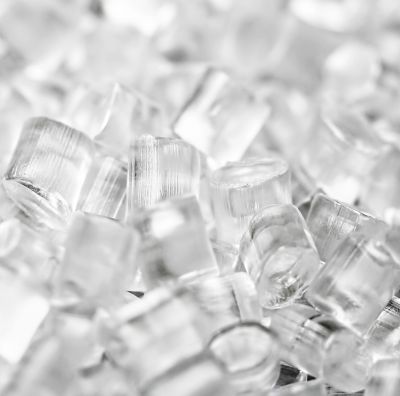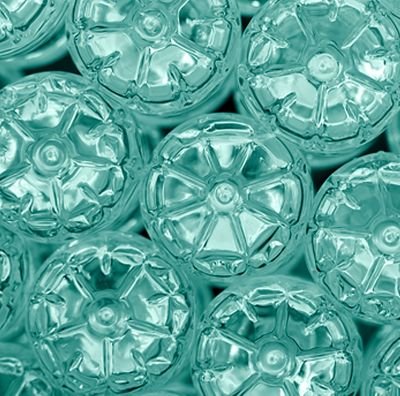- Our impact
- Environmental
- Social responsibility
- Governance
- Molecular recycling
- Plastic solutions
- Sustainability report
- Stories
- Contact us
- Home ...
- Sustainability
- Environmental
- Circularity
- Circular solutions
- Mechanical and molecular recycling
Mechanical
and molecular recycling
Some things are just better together.
Historically, “made with recycled content” refers to materials and products made from mechanical or traditional recycling. Mechanical recycling typically processes two types of widely recycled plastics: PET and HDPE. These are the plastics marked with Resin Identification Code (RIC) 1 or 2 — products like clear, single-use water bottles and clear gallon milk jugs. The mechanical recycling process includes collecting plastic waste from recycling bins, delivering it to a recycling center, cleaning and chopping, and then remelting and forming plastic pellets that will be used to make other products.
Mechanical recycling is a very effective, environmentally friendly process that should be used whenever possible. However, mechanical recycling generally can’t process the other five types of plastic — items like fast food containers, colored plastic bottles and plastic eyeglass frames. These items have RICs 3 through 7 and typically end up in landfills or incinerators.
Mechanical recycling is useful, but it has limitations:
- It requires clean sources of materials.
- Materials can only be mechanically recycled a finite number of times due to degradation, often resulting in reduced performance in key properties.
- It can only process two of the seven types of plastics produced.
Many products made with recycled content eventually end up in the landfill due to downcycling or degradation over time. For example, a water bottle cap can be recycled into a lipstick container. That lipstick container, if recycled, can be made into a pen; the pen, if recycled, can be made into shoelace tips. At this point, the shoelace tips can’t be recycled and often will end up in a landfill.

Mechanical recycling delays plastic from going to the landfill, but that’s not enough by itself. We need a complementary recycling solution to create products that improve our quality of life and keep them in use longer.
Through Eastman’s molecular recycling technologies, we are creating value from waste that mechanical recycling cannot handle. These technologies break down waste into its molecular building blocks so it can be reused over and over again — creating an infinite life span for materials that were previously destined to be discarded. Molecular recycling provides a powerful new tool in the fight against material waste, enabling us to reimagine and revolutionize materials.
Both mechanical and molecular recycling are required to eliminate waste and create a truly circular economy.


The two types of molecular recycling
At Eastman, we use two different types of molecular recycling technologies — polyester renewal technology and carbon renewal technology.
Polyester renewal technology (PRT) takes polyester plastics, such as soft drink bottles, carpet and polyester-based clothing, and unzips them back to their basic monomers. These monomers are sent through a polymerization process to make final products.
Carbon renewal technology (CRT) takes a broad mix of plastic waste — sometimes as diverse as mixed plastics, textiles and carpet — and uses them as a material source. Then, that waste mixture is converted back to molecules and chemical building blocks to make a broad range of new consumer products.

Mechanical and molecular recycling are two very different approaches to recycling with clearly different benefits. Mechanical recycling should be leveraged whenever possible because it is the most efficient and environmentally friendly recycling process in the materials space. However, without molecular recycling it will be challenging to meet sustainability goals with mechanical recycling alone.
Advancing complementary material technologies and circular solutions is central to Eastman’s commitment to deliver change right now.










